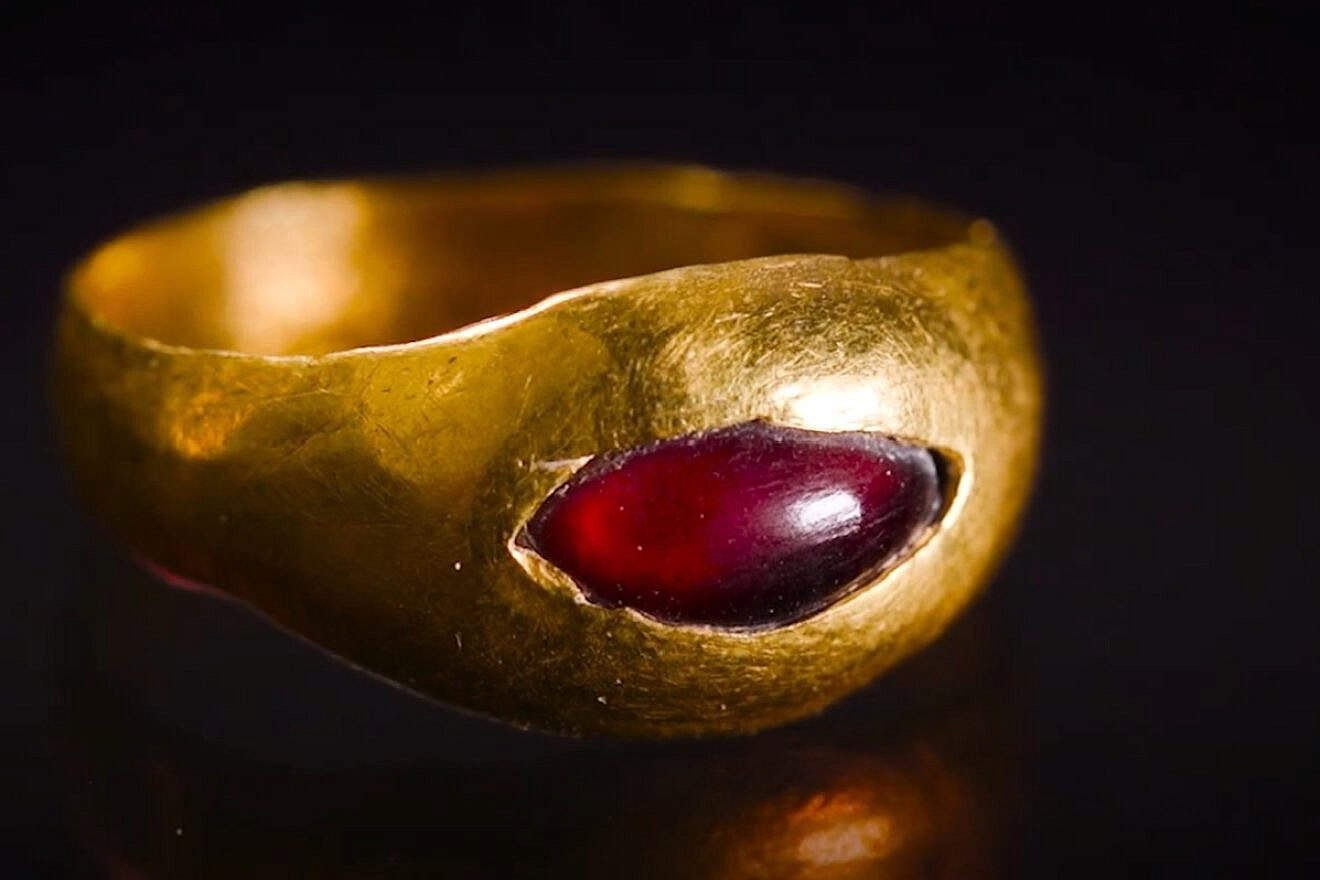by JNS
Discoveries at the site "are beginning to paint a new picture of the nature and stature of Jerusalem’s inhabitants in the Early Hellenistic Period," said TAU professor Yuval Gadot.
 |
A 2,300-year-old gold ring found at the Givati Parking lot excavation in the City of David. Credit: Asaf Peri/City of David. |
A gold ring dating from the early Hellenistic period set with a precious stone was recently found in the joint Israel Antiquities Authority-Tel Aviv University excavation in Jerusalem’s City of David.
The 2,300-year-old ring was discovered by Tehiya Gangate, a City of David excavation team member.
The ring was manufactured by hammering thin pre-cut gold leaves onto a metal base. Stylistically it reflects the common fashion of the Persian and Early Hellenistic periods, dating from the late 4th to early 3rd century BCE and onwards.
The finds at the excavation “are beginning to paint a new picture of the nature and stature of Jerusalem’s inhabitants in the Early Hellenistic Period,” said professor Yuval Gadot of Tel Aviv University.
“Whereas in the past we found only a few structures and finds from this era, and thus most scholars assumed Jerusalem was then a small town, limited to the top of the southeastern slope (“City of David”) and with relatively very few resources, these new finds tell a different story: The aggregate of revealed structures now constitute an entire neighborhood,” he added.
“They attest to both domestic and public buildings, and that the city extended from the hilltop westward. The character of the buildings—and now of course, the gold finds and other discoveries—display the city’s healthy economy and even its elite status,” he said.
“It certainly seems that the city’s residents were open to the widespread Hellenistic style and influences prevalent also in the eastern Mediterranean Basin.”
The ring will be exhibited to the public at the free “Jerusalem Mysteries” conference hosted by the Israel Antiquities Authority on Jerusalem Day, June 5.
JNS
Source: https://www.jns.org/2300-year-old-gold-ring-found-in-jerusalems-city-of-david/
No comments:
Post a Comment